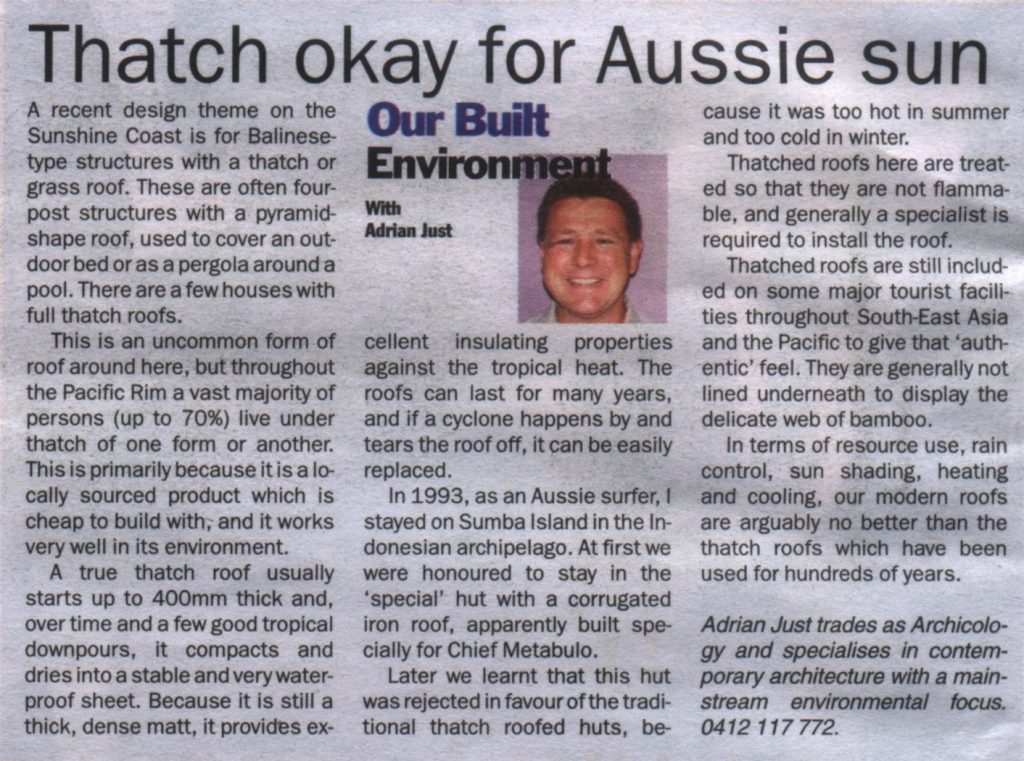
A recent design theme on the Sunshine Coast is for Balinese-type structures with a thatch or grass roof. These are often four-post structures with a pyramid-shape roof, used to cover an out-door bed or as a pergola around a pool. There are a few houses with full thatch roofs.
This is an uncommon form of roof around here, but throughout the Pacific Rim a vast majority of persons (up to 70%) live under thatch of one form or another. This is primarily because it is a locally sourced product which is cheap to build with, and it works very well in its environment.
A true thatch roof usually starts up to 400mm thick and, over time and a few good tropical downpours, it compacts and dries into a stable and very water-proof sheet. Because it is still a thick, dense matt, it provides excellent insulating properties against the tropical heat. The roofs can last for many years, and if a cyclone happens by and tears the roof off, it can be easily replaced.
In 1993, as an Aussie surfer, I stayed on Sumba Island in the Indonesian archipelago. At first, we were honoured to stay in the ‘special’ but with a corrugated iron roof, apparently built specially for Chief Metabulo.
Later we learnt that this but was rejected in favour of the traditional thatch roofed huts, because it was too hot in summer and too cold in winter.
Thatched roofs here are treat-ed so that they are not flammable, and generally a specialist is required to install the roof.
Thatched roofs are still included on some major tourist facilities throughout South-East Asia and the Pacific to give that ‘authentic’ feel. They are generally not lined underneath to display the delicate web of bamboo.
In terms of resource use, rain control, sun shading, heating and cooling, our modern roofs are arguably no better than the thatch roofs which have been used for hundreds of years.







